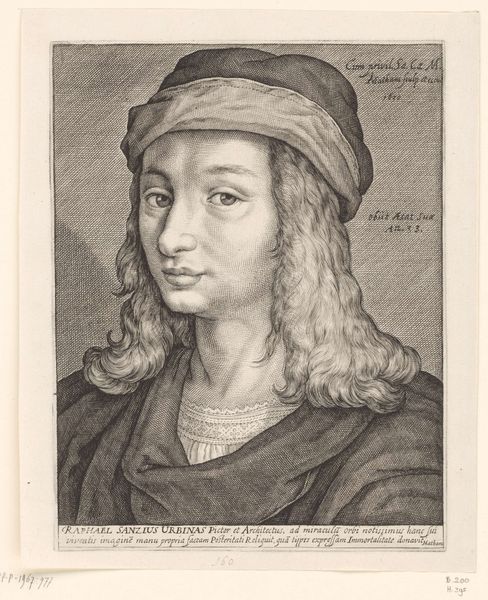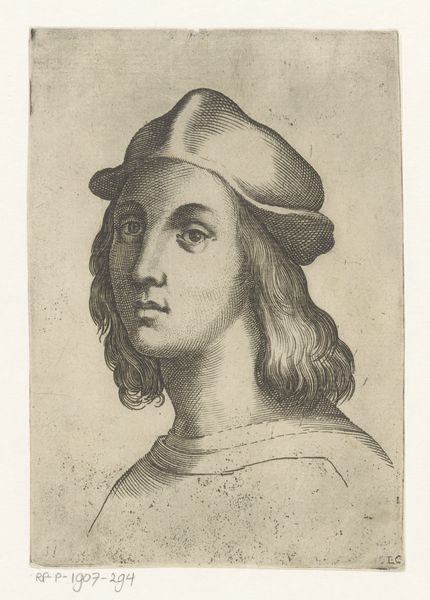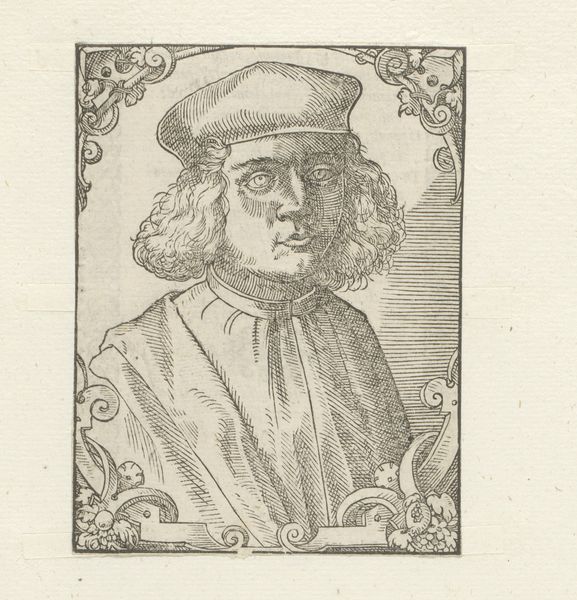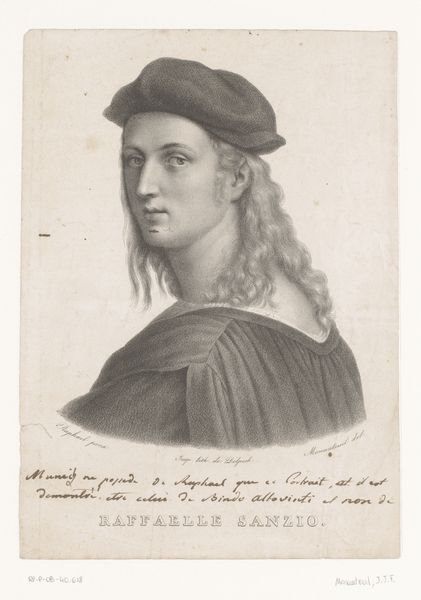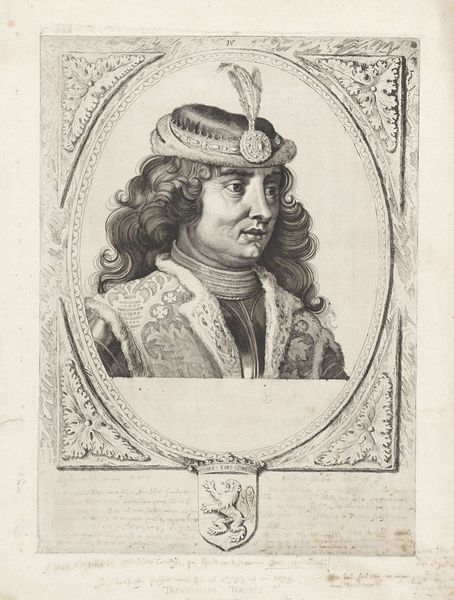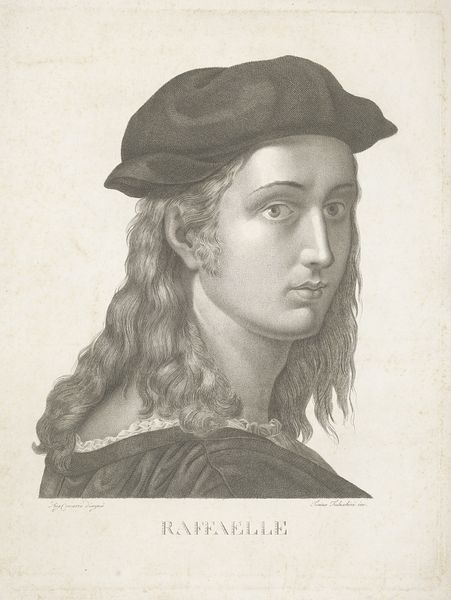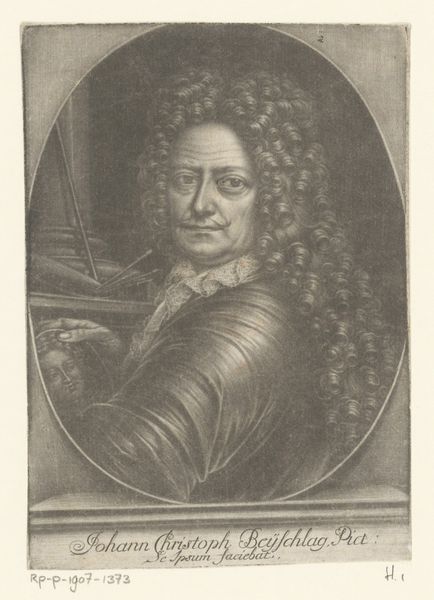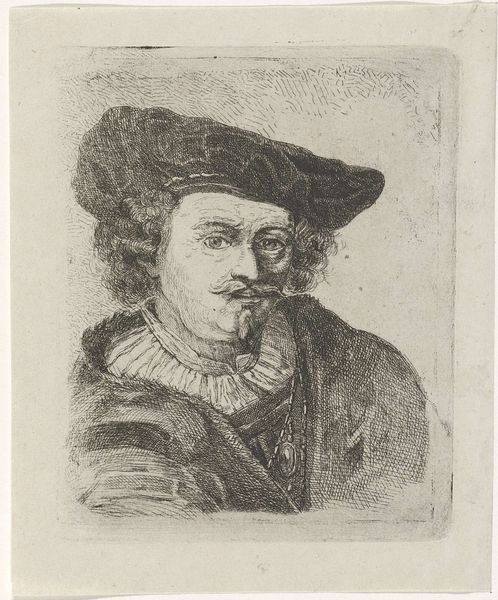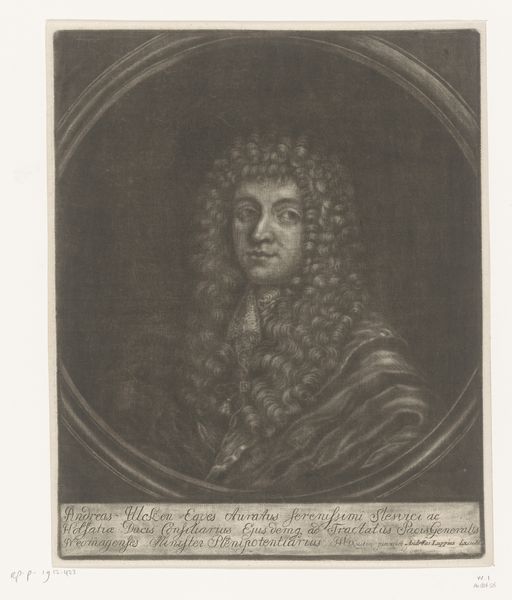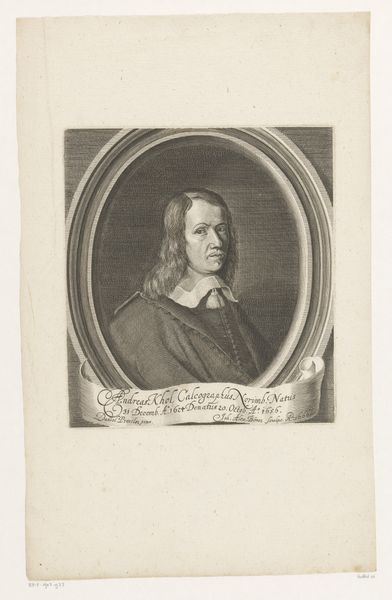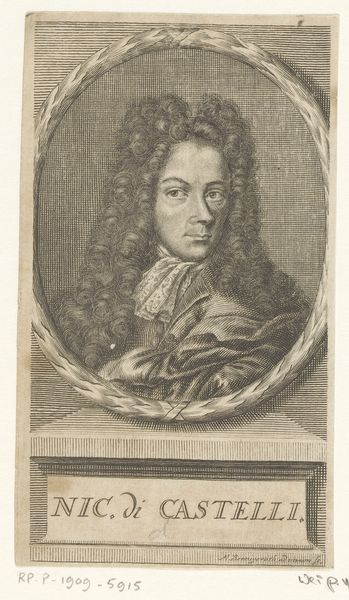
print, graphite, engraving
#
portrait
#
pencil drawn
#
toned paper
#
facial expression drawing
#
light pencil work
# print
#
pencil sketch
#
old engraving style
#
portrait reference
#
pencil drawing
#
graphite
#
portrait drawing
#
pencil work
#
italian-renaissance
#
engraving
Dimensions: height 209 mm, width 167 mm
Copyright: Rijks Museum: Open Domain
Curator: This intriguing portrait, simply titled "Portret van Rafaël," dates somewhere between 1641 and 1741. It's believed to be crafted by Jean Baron, utilizing an engraving technique, potentially with graphite or pencil on toned paper. Editor: There’s an ethereal quality to it. The lines are so delicate, almost whispering, giving it a serene, contemplative air. It is the embodiment of subtle chiaroscuro! Curator: The choice of depicting Raphael resonates deeply. During that time, invoking a Renaissance master served as a powerful symbol, reminding viewers of cultural and artistic ideals during periods of upheaval and change. Editor: Precisely, notice how the artist uses a cross-hatching to convey both form and depth? The textures of his hat and robe—remarkable! This method serves not only aesthetic value but also creates dimension by creating an almost velvety richness! Curator: Beyond pure aesthetics, such portraits acted as totems, aligning the sitter or commissioner with the legacy of brilliance, almost suggesting an intellectual or creative inheritance. The past is being evoked in order to claim prestige! Editor: I see your point, although I wonder about the choices for creating Raphael in a less refined way; what can it be a pencil work after such great portraits created in the past? It does serve a powerful semiotic function as if to underline a more 'human' depiction rather than divinity? Curator: Absolutely, it could signal a shift in perspective— perhaps a move away from deifying artists and towards recognizing their human complexities? Editor: This piece exemplifies the enduring allure of reinterpretation! By examining these visual elements carefully, it creates new meanings for a renewed present! Curator: Indeed. By understanding these cultural echoes and material choices, we access deeper understandings of the artistic aims of later eras! Editor: It is an intriguing, almost paradoxical composition where line, form, and material are blended in such way to both obscure and enlighten.
Comments
No comments
Be the first to comment and join the conversation on the ultimate creative platform.
